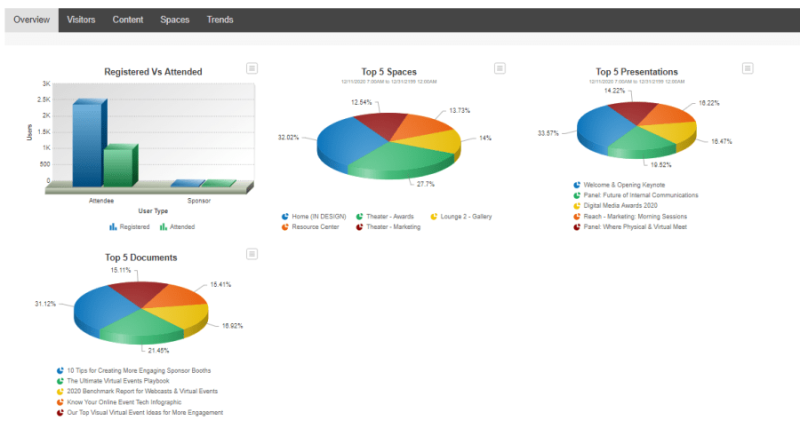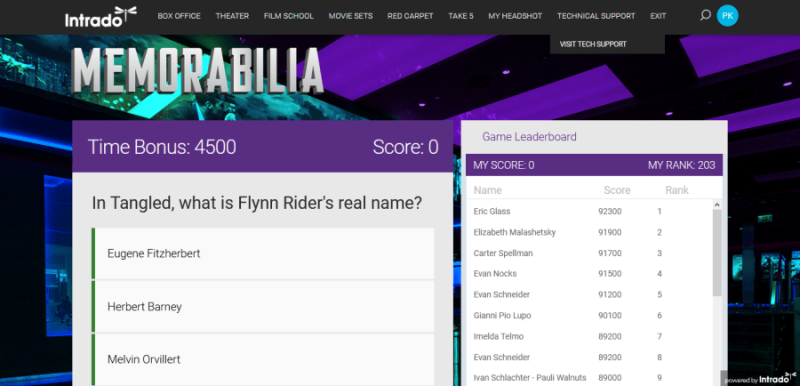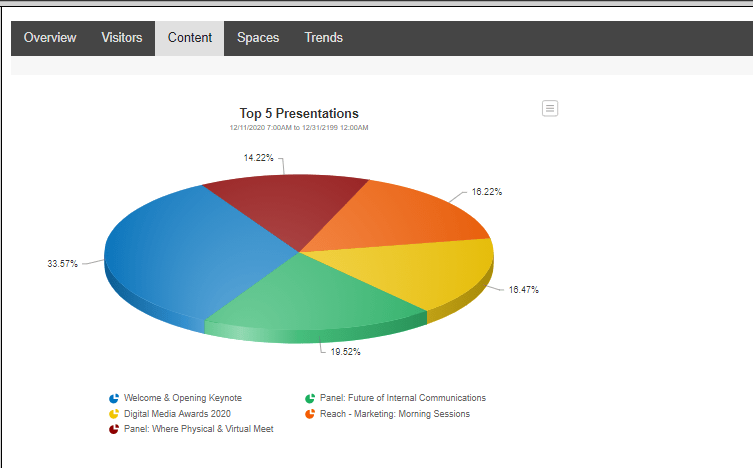Event planners and marketers are facing a new challenge: How do you combine the power of in-person events with the scalability and global reach of digital channels?
The short answer is that virtual events are not going anywhere. As we move forward, the next generation of business events will see a convergence of in-person and virtual environments that create hyper-engaging, immersive experiences. The power of virtual allows us to create lasting content that exists beyond a single place and moment in time – and events simply cannot move forward without incorporating online elements.
Notified hosted a roundtable discussion on this very topic featuring event professionals from INVNT Group, Encore and The American Society of Anesthesiologists to hear their thoughts about the future of hybrid events using end-to-end event platforms.
Watch a short clip of the conversation below and keep reading to see a summary of the discussion and learn five steps you can take to plan a successful events strategy.
What Is a Hybrid Event?
Let’s start with a definition. Hybrid events have been around for many years – pretty much since the advent of television. But they are relatively new to the business world.
Live sports, for example, are hybrid events. The game is experienced both in-person by fans as well as by viewers at home watching from a TV or mobile device.
At their core, hybrid events blend the collective enthusiasm of in-person with the scalability of virtual events to create immersive, far-reaching experiences that exist beyond a specific moment or place.
The challenge lies in the execution: How do you recreate the energy of a live crowd for a global, online audience?
Step 1: Leverage Event Data
We live in a metrics-driven world. Data is an essential part of the decision-making process; without it, we are flying blind.
As you begin planning your hybrid event, you can examine your data from several angles to help you determine what your event should look and feel like.
- Examine Demographic Data: Has your global footprint grown after a year of purely virtual engagement? How has your audience moved and shifted? Where are they located, and what might their cultural norms be given that information? What time zones should you prioritize when planning your event? Should you offer specific language localization options?
Considering each of these questions carefully will enable you to begin tailoring your event to your audience’s locality, allowing them to feel more “at home” in the experience you create.
- Examine Behavioral Data: How does your audience behave within your event? What captures their attention? What motivates them to stay engaged? What content do they interact with and how do they interact with it?
In the past, detailed behavioral data has been something like an elusive ghost for live event planners; it is nearly impossible to track and measure audience behavior in a crowded event hall of thousands of people. Virtual event data allows you not only to measure and report on key metrics, but enables you to better understand your audience. With this new data set, you are able to use predictive analytics to tailor future events to your exact audience needs.

Ultimately, data will be the underlying requirement for any in-event decision moving forward. The ability to gather and report on that data will determine what your future events will look like. The analytic power of virtual events allows you to gather this information in one place and use it to your advantage as you strive to create an impactful and memorable journey for your attendees.
Step 2: Create Unique Experiences
Once you have gathered and analyzed your event data, it’s important to understand exactly WHO will be participating in your event.
Now, more than ever, your audience is going to consume your material differently. Setting expectations clearly for both the in-person and virtual audiences will be critical to overall success.
It is also important to remember that simply broadcasting every element of your in-person event to your virtual audience will not be enough to engage remote attendees; there must be thoughtful consideration put into each channel.
- Include an event host. Both your in-person and virtual event should have a designated, unique host. It is the responsibility of your hosts, regardless of platform, to delight, engage, and entertain your audience. Be sure that the person you select to host your virtual event has experience keeping distant audiences’ attention.
- Tailor your content and programming across channels. Consider the length, medium, and format of your content depending on where and how it is being consumed. It is acceptable to stream SOME of your in-person content to your virtual audience (your keynote, for example), but you should then create unique tracks for each audience. Virtual attendees are probably less likely to sit through a 90-minute panel discussion, for example; be sure to consider appropriate length and content when deciding on your virtual programs.
- Connect your audience where they intersect. Hybrid events give you the power to connect your in-person audience with virtual attendees with people they may have never otherwise met. Encourage networking and engagement that goes beyond a single moment in time.
It is always important to remember that content is king, and your job is to engage your audience. Producing unique, high-quality programming, regardless of channel, will create a more impactful hybrid experience.
Step 3: Build Your Community with Always On Engagement
Audiences now demand 24/7 access to your event materials.
In the past, in-person events managed this expectation by providing swag bags, social engagement, and other touch points as a way to excite participants. Adding a virtual element makes this all much easier.
Virtual events allow you to engage your audience both before AND after your live event with interactive content, games and networking features.

- Before Your Event: Encourage attendees to visit booths, chat, ask questions and download pre-event content. This gives them the opportunity to acquaint themselves with the virtual environment and creates buzz around the entire event.
- After Your Event: You’ll have a brand new library of exciting content to engage your audience with in perpetuity. You can utilize post-event spaces to create follow-up content, micro-events, and networking opportunities that foster year-round engagement.
Beyond engagement, however, virtual events allow you to grow your community on a scale not previously possible. In the past, on-site events might host a crowd of around 25,000 (depending on the event and venue, obviously). Now, with virtual components, events can reach audiences of 100,000 or more across cultures, time zones and language barriers. And with longer “shelf lives,” virtual events allow you to not only accommodate different geographies and backgrounds, but to keep and reuse content at will.
Step 4: Embrace the New
Completely changing business strategies can be an intimidating endeavor. However, adapting early to new technologies will allow you to gain an edge over competitors as you produce more creative, engaging experiences for your attendees.
Immersive technologies allow you to re-imagine events and find new ways to interact with your audiences. For example, at SXSW, HBO Max allowed users to immersively experience over 150,000 scenes from their extensive content library using 3D technology, facial movements and voice prompts.
Virtual platforms also allow you to deliver new options to your monetization streams, providing more opportunities for sponsorship packages. As you consider your event monetization strategy, you should include both digital and in-person options. The highest-tier packages should blend the best of both experiences to increase sponsorship value. Utilize your event data to determine where your audience is likely to convene, and create value-driven packages based on that information; when it comes time to sell sponsorships, you will have hard data to prove ROI.
Step 5: Effectively Measure Business Event Impact
We’ve come full circle in our event planning strategy. Again, the most important piece of this new event puzzle is effectively gathering data and reporting ROI to key stakeholders. It’s important to remember that you may need to re-define your traditional event goals; previous goals may no longer be relevant in this new landscape.
It is important to examine all of your digital data and previous years’ live event data to come up with a blended strategy that is achievable with these new parameters. Ensure you have a plan in place to track ALL event activity so that you can gather a holistic view of your complete event life cycle.
More importantly, don’t be afraid to revisit and tweak your strategy. Keep a pulse on your program and how it’s performing against your goals. Check your data regularly and continue to iterate based on performance. One of the best things about virtual and hybrid events is that they give you the opportunity to be more agile and reactive than ever; utilizing data to change course when necessary is critical to continued success.

Summary: The Future of Business Events is Hybrid
There are a lot of remaining questions about the future of business events and what this new hybrid landscape might entail. Event planners may be concerned about the prospective costs or staff resources available to incorporate these new content streams into their event strategies.
However, the benefits of hybrid events far outweigh the costs; in the past, when a closing keynote ended and the audience left, the event was simply over. Now, on-demand streaming content allows you to continue engaging that audience long after the in-person component concludes.
Further, virtual events allow you to reach audiences on a global scale in a way that is not possible in onsite events. To be successful in this new generation of business events, there are a few simple things to remember:
- Start with data, and end with data
- Integrate digital and physical touchpoints so you can capture insights to inform and evolve your event strategy
- Create branded, unique experiences for both audiences that create lasting memories and provide value
If you want to view the full hybrid event panel discussion, you can watch it on demand here.
Get a Demo of Our End-to-End Event Platform
Whether you’re hosting virtual or hybrid events to reach customers, employees, investors, or partners, Notified is here to help bring your vision to life.
We host over 100,000 webcasts and virtual events annually on behalf of thousands of customers around the world while providing dedicated support with a focus on data.
All events include:
- Dedicated project manager
- Interactive environments with live & on-demand programming
- Flexible branding and personalization options
- Accessibility – anytime, anywhere, and from any device
- Robust analytics and reporting
- And, from strategy and planning to implementation and delivery, our consulting services team supports you every step of the way.
Contact us today to set up a free demo and learn more about our services.
